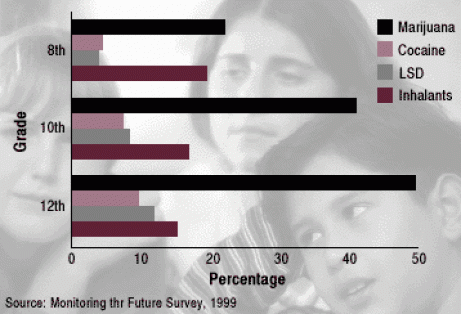Dependency-Dependency-Dependency
Inhalant abuse, commonly called huffing, is the purposeful
inhalation of chemical vapors to achieve an altered mental or
physical state, which for most abusers is a euphoric effect.
Abusers inhale vapors emitted from a wide range of substances.
In fact, chemical vapors used as inhalants can be found in over
1,000 common household products. There are several
general categories for substances that may be used as
inhalants. After heavy use of inhalants, abusers may
feel drowsy for several hours and experience a
lingering headache. Because intoxication lasts only a
few minutes, abusers frequently seek to prolong their
high by continuing to inhale repeatedly over the
course of several hours. By doing this, abusers can
suffer loss of consciousness and death.
Addiction-Addiction-Addiction
Addiction with inhalants can occur within first time of use. After becoming high with inhalants, many abusers repeatedly huff the drug until they pass
out.
Signs of Abuse
Drunk or disoriented appearance
Paint or other stains on face, hands, or clothing
Hidden empty spray paint or solvent containers
and chemical-soaked rags or clothing
Slurred speech
Strong chemical odors on breath or clothing
Nausea or loss of appetite
Red or runny nose
Sores or rash around the nose or mouth
Before and After pictures of inhalant abusers

The first picture is a picture of a non-abuser.
This is a picture of a person who abused inhalants, as
you can see the brain is much smaller. Huffing inhalants
severely shrinks the brain and can sometimes lead to
mental retardation.

